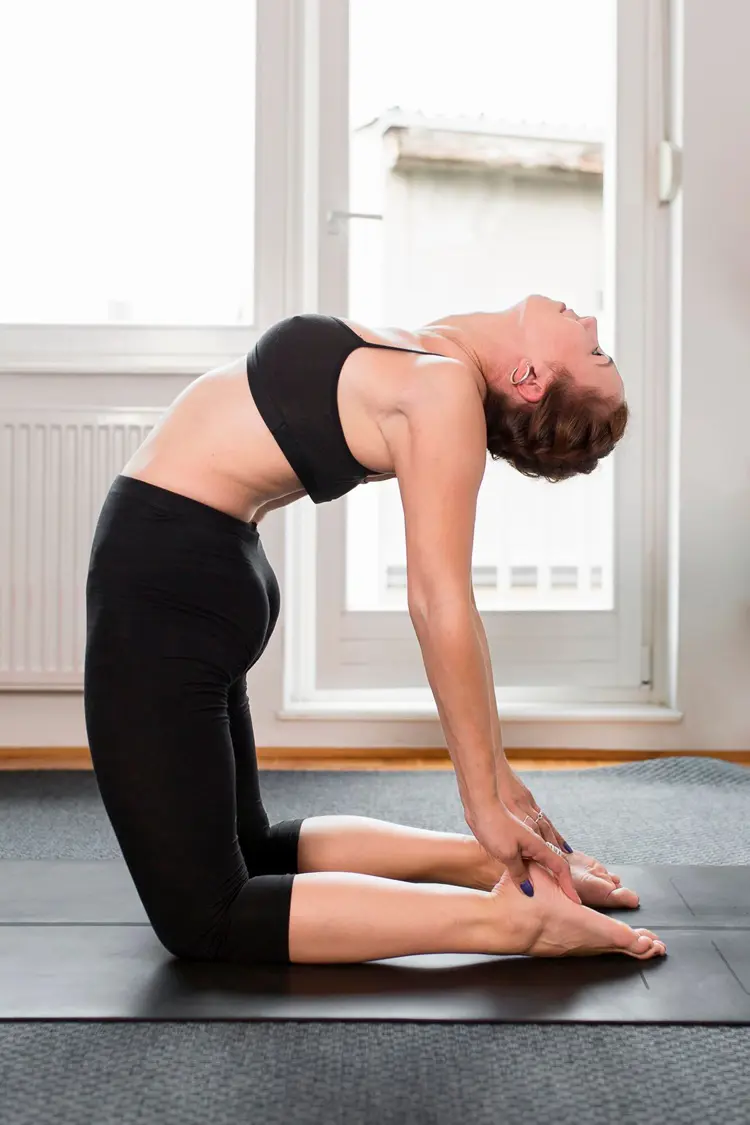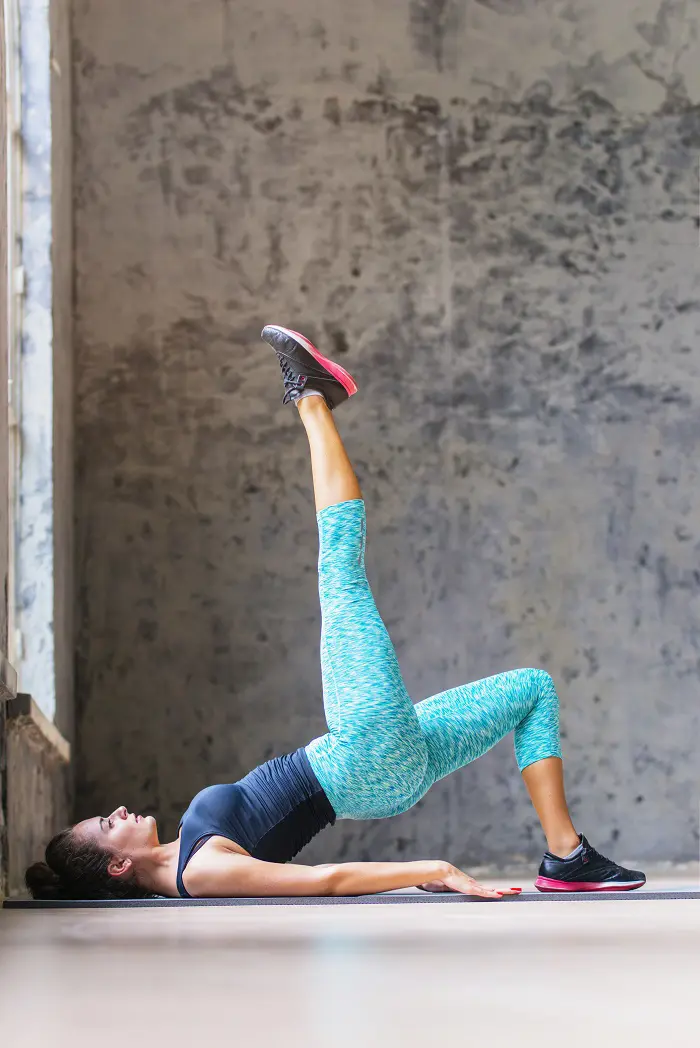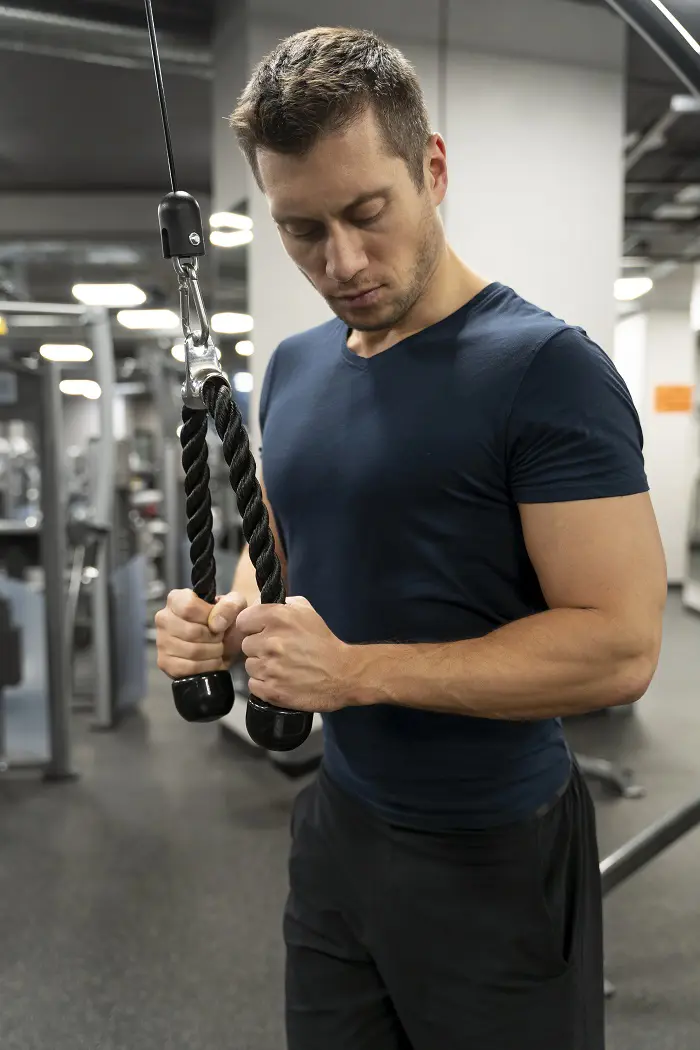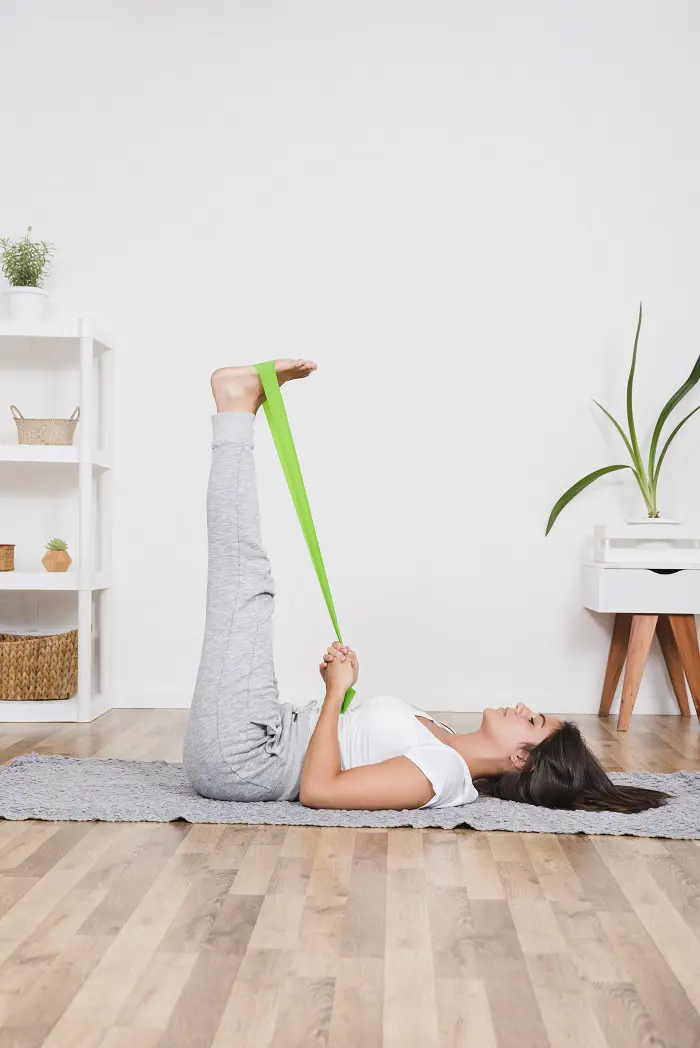12 Vagus Nerve Exercises To Combat Stress And Anxiety

Activating the vagus nerve is a powerful way to reduce stress and anxiety. By performing specific exercises that stimulate this nerve, we can encourage our bodies to heal and enhance overall functionality.
These activities, which aim to create a sense of calmness, might be as simple as deep breathing, gentle movements, or even humming sounds. So, let's explore 12 incredible vagus nerve exercises to support your mental health.
1. Deep Breathing Exercises

Deep breathing exercises are a fantastic way to soothe the vagus nerve and reduce stress. Different breathing techniques offer diverse benefits for enhancing relaxation and sustaining respiratory health.
For instance, Diaphragmatic breathing involves breathing deeply by expanding the belly. Likewise, Box breathing is practiced via the 4-4-4-4 method - where you inhale, pause, and exhale for 4 seconds. This helps regulate the nervous system and allows clarity of the mind.
2. Meditation

The second exercise on the list is meditation. It is an effective method for promoting emotional stability and relaxation by concentrating the mind. This technique is rooted in ancient times and can take various forms (such as visualization, mindfulness, and movement meditation).
Meditation naturally triggers the parasympathetic nervous system, which aids in increasing self-awareness and improving attention. Even a short daily session can provide a mental reset at any time and location.
3. Humming

Humming stimulates the vagus nerve, making it an easy yet powerful way to combat stress and anxiety. The vibrations produced by humming sound can maintain blood pressure and help you feel more calm.
Start by sitting or standing comfortably with your back straight. Now, take a deep breath through your nose and release it gently, producing a soft humming sound from your throat. Try to keep the hum going while you feel the vibrations in your chest and head.
Practice humming in a peaceful area where you won't be distracted to maximize the result. Also, try a variety of pitches and combine this exercise with deep breathing.
4. Massage

In addition to having a calming effect, massage is also an excellent method of facilitating the vagus nerve. A variety of massage types (Swedish, Deep tissue, Thai Massage) can promote relaxation by releasing muscle tension at trigger points.
Applying pressure to specific body locations also helps improve blood circulation. Consider it a 'spa day' for your vagus nerve or a way to send soothing messages to the body and help you feel fantastic.
5. Cold Water Immersion
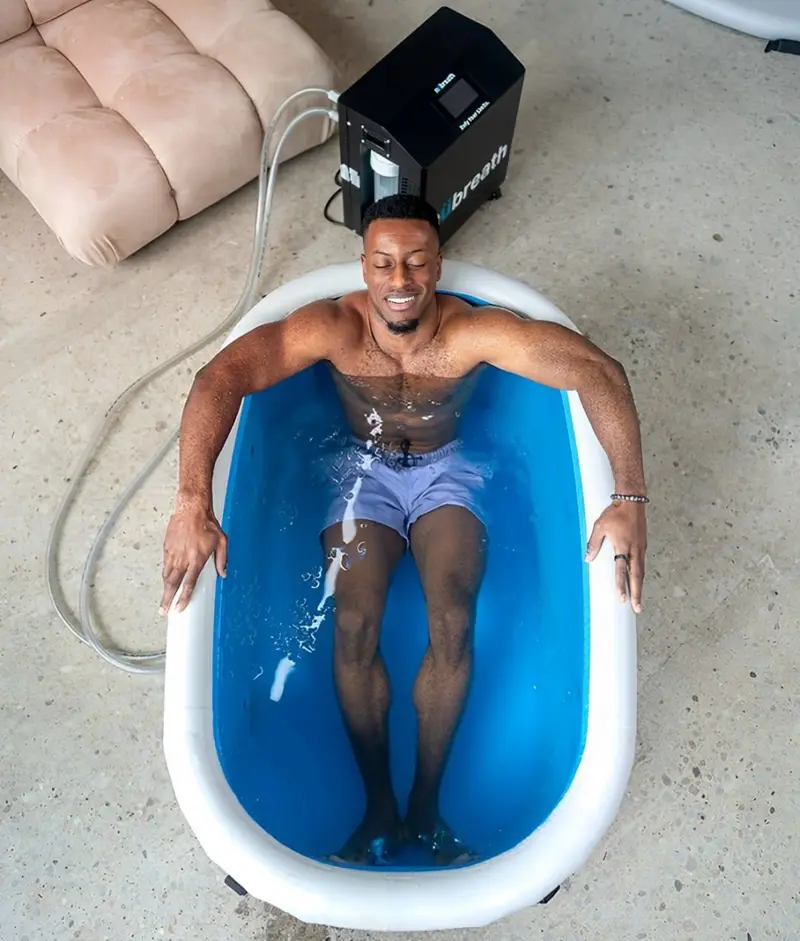
Have you ever heard of the ice bucket challenge that went viral on social media? It is a fun example of how cold water immersion can relax the vagus nerve. The water generally ranges between 50 to 60° F, which is considered cold enough for the challenge.
This technique has recently gained popularity among athletes due to its ability to calm the nervous system and reduce inflammation. The icy water also releases endorphins from the body, improving mood and offering an anxiety-free state.
Cold water immersion usually comes in many forms - ice baths, cold showers, and natural cold-water plunges in rivers and lakes. All these techniques help stimulate the vagus nerve, ultimately promoting overall physical and mental well-being.
6. Light Yoga Poses
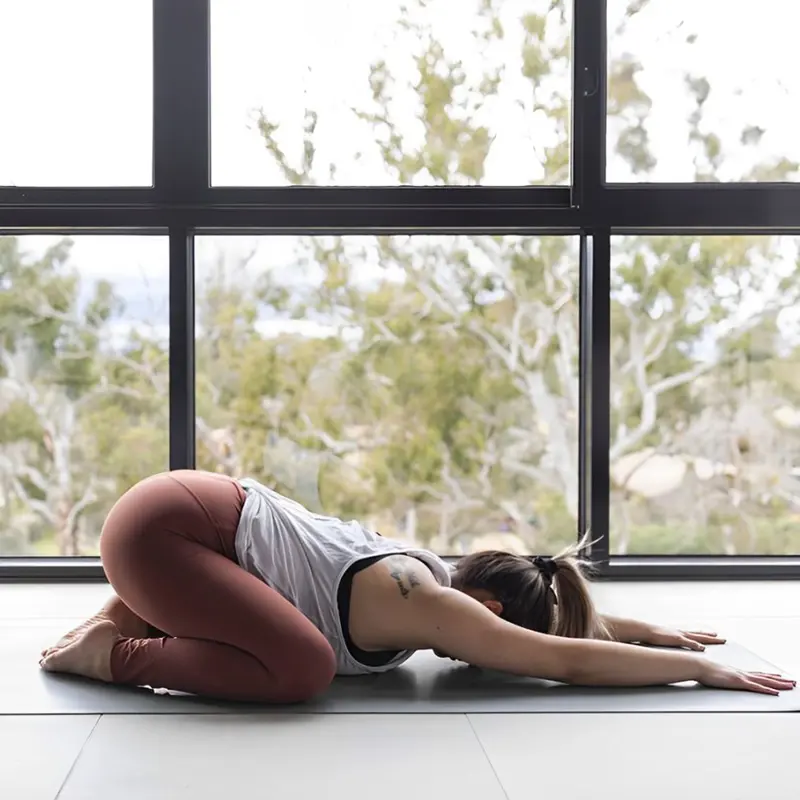
Stretching the body and calming the nerves without putting in a lot of effort can be achieved with light yoga poses. Child's Pose, Cat-Cow, and Seated Forward Fold are a few soothing poses that help increase flexibility and relieve stress.
Similarly, the Legs-Up-The-Wall and the Butterfly pose are also perfect for encouraging tranquility in the vagus nerve. Go slowly and attentively through each pose, paying attention to your breath. Don't rush or push any stretches. You could also use cushions for additional support (especially in seated positions).
7. Belly Laughing

Perhaps one of the most entertaining methods for dealing with anxiety is Belly laughing. Haven't you noticed that when you laugh really hard, even your tummy tends to jiggle? This gives you a little bit of a workout on your stomach and vagus nerve.
It may fire up the vagus nerve to help someone unwind and de-stress. You can do this when watching some funny movie or hearing your favorite comedian's jokes. Just a brief belly laugh is enough to exercise your nerves and combat anxiety.
8. Gentle Neck Stretches

Mild neck stretches are fantastic techniques for firing off the vagus nerve, reducing tension, and lessening anxiety. The parasympathetic nervous system heavily draws upon the vagus nerve to facilitate calmness and tranquility.
Begin by sitting comfortably on a floor with the back straight. Then, tilt your head slightly towards the left shoulder without modifying the posture. Hold the position for 30 seconds and feel the stretch on the right side of your neck. Lastly, repeat the process on the opposing side of the neck.
Plus, taking deep breaths while doing this stretch further stimulates the vagus nerve and boosts the relaxing effect.
9. Alternate Nostril Breathing

Alternate Nostril Breathing is another useful breathing exercise to promote a sense of peacefulness. Breathing from one nostril at a time helps to increase oxygen flow to the brain and keep the mind serene.
To perform it, sit on the floor and close the right nostril with the thumb. Take a long breath through the left nostril and close it with the right ring finger. Open the right nostril and slowly exhale. Again, inhale through the right nostril and exhale through your left.
10. Tai Chi And Interval Training

Tai Chi is an ancient Chinese martial art practice that stimulates the vagus nerve by supporting the parasympathetic nervous system.
Meanwhile, interval training offers a unique approach to engaging the vagus nerve and bringing a sense of relaxation. This training, comprised of workouts like Push-Ups, Mountain Climbers, and Squat Jumps, boosts the heart rate and then allows it to calm down, giving you a quick mood boost.
Pay attention to your breathing while doing the interval training. Breathe the fresh air slowly and deeply to fill the lungs fully. This will not only stimulate the vagus nerve but also relax the neurological systems of the body.
11. Ear Pull

Gently pulling and massaging your ears that connect to the vagus nerve can help lower stress and anxiety. This ear pull exercise is a straightforward yet powerful technique for activating your relaxation mode.
Sit comfortablly and lightly grab the earlobes with your thumb and index finger. Hold them for a few seconds and slowly move them upward and downward. Next, use your fingertips to massage the earlobes in a circular motion. Repeat this procedure on both ears for a minute or two.
12. SCM Stretch
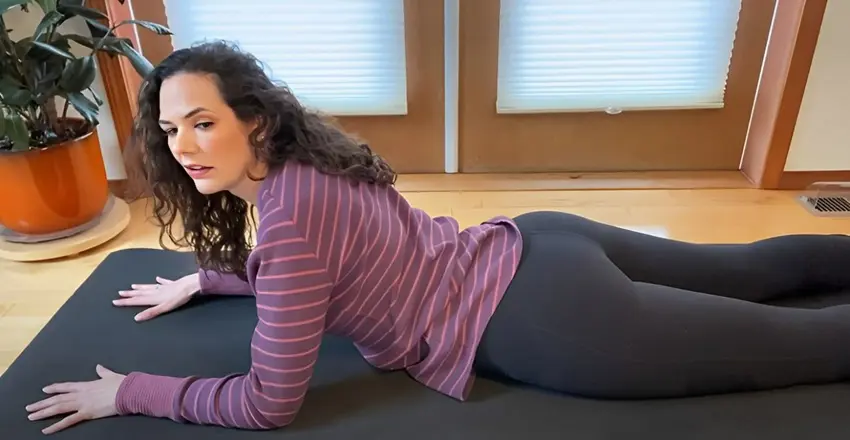
The SCM (Sternocleidomastoid) stretch targets the neck muscles that frequently retain tension. Relaxing these muscles can calm the vagus nerve and decrease tension levels.
First, lie face down to do this stretch. Slowly tilt your neck to the left by bringing the ear close to your shoulder. Move to the right side after holding for 20 to 30 seconds. Aim for a soft and intended motion to prevent injuries.
Moreover, stretching while taking deep breaths might increase the soothing effect. Try tilting your head and lightly pressing your fingertips on the skull for extra intensity.
Importance Of Vagus Nerve Stimulation
The vagus nerve is a major player in the human body's relaxation process because it connects the brain to the other parts of the body (heart, lungs, and digestive system). Therefore, stimulation of the vagus nerve is necessary to manage stress and improve general well-being.
Here are some of the main importance of exercising the vagus nerve:
1. Improves Heart Health
Heart rate and cardiovascular health depend closely on the activity of the vagus nerve. The nerve is known to stimlate the heart muscles and affect the heart's natural pacemaker.
This reduces the chances of various heart conditions like arrhythmias. It is also a wonderful method of ensuring cardiovascular wellness and improving cardiac strength.
2. Enhances Digestion
The movement of food throughout the intestine is controlled by the vagus nerve. So, exercise for vagus nerve further helps improve the absorption of nutrients and stimulates digestion effectively.
Adding these vagus stimulation exercises might also be beneficial for an individual who is feeling discomfort during digestion.
3. Strengthens Immune System
Immune health relies on the body's ability to control inflammation, which is facilitated by a healthy vagus nerve. When the vagus nerve is active, the body responds more effectively to infection and injury.
Such activities enhance the immune capacity to fight infections. Thus, activities that stimulates the vagus nerve are essential for improving overall well-being.
4. Supports Emotional Regulation
The Vagus nerve is also related to emotional stability because it controls mood and emotional responses. This will improve resilience by increasing the body's capacity to cope with stress and recover from sensitive situations.
Practicing meditation or light forms of yoga can develop a more balanced and joyful stance on life.
5. Enhances Sleep Quality
The vagus nerve triggers the body's relaxation process to prepare for sound sleep. Vagal nerve exercises aid in easing into a deeper and restorative sleep cycle by reducing excessive nervous system activity.
Also, regularly performing vagus nerve stimulation exercises can cure insomnia and establish a healthier sleep cycle.
Where Is Vagus Nerve Pressure Point Located?
Important pressure points of the vagus nerve are situated in accessible locations for stimulation, which can reduce stress and promote relaxation. One of the major locations is located directly behind the ear. You can activate the vagus nerve by gently massaging this area.
Similarly, the vagus nerve runs along the artery in the neck. Exercising this point is useful for individuals trying to control anxiety as it lowers heart rate.
Lastly, there is a lower point of the vagus nerve close to the abdomen. Concentrating on deep breathing while lightly pressing on this region can lower stress levels and provide relief. Utilizing these spots also allows us to access the calming effect of the vagus nerve naturally.
Mistakes To Avoid
It is important to avoid some common mistakes to ensure effective and safe training. Here are key mistakes to avoid when doing vagus nerve workouts:
1. Rushing Through Exercises
Vagus nerve exercises demand a calm and slow pace to activate the nervous system. Rushing or doing rapid movements during these workouts can actually increase stress instead of relieving it. Take your time with each exercise to allow the full relaxing benefits.
2. Forgetting To Focus On Breath
Proper breathing techniques play a vital role in vagus nerve stimulation. Focusing too much on physical movement rather than the breath can diminish the effectiveness of these exercises. So, never skip deep and diaphragmatic breathing techniques.
3. Using Too Much Pressure
Gentle touch and pressure are usually best for vagus nerve exercises. However, overly forceful movements in ear pulls or neck massages can cause discomfort and strain rather than relaxation. Aim for soft and soothing touches when performing any stimulation exercise.
4. Neglecting Regular Practice
Irregular practice might bring limited or temporary benefits. Always establish a proper routine that allows the nervous system to adjust and respond better over time. This will assist in promoting long-term relaxation.
5. Ignoring Discomfort Or Pain
Vagus nerve stretches should not induce pain. But If any exercise (like neck stretches or cold-water immersion) feels uncomfortable or painful, stop immediately and take a proper rest before starting another exercise. Ignoring pain can worsen stress and may result in other severe issues.
Common Issues Related To Vagus Nerve
There are numerous common problems related to the vagus nerve. Understanding it can help to emphasize the importance of maintaing a healthy vagus nerve to balance both body and mind. Some related issues include:
- Digestive issues
- Chronic inflammation
- Migraines and headaches
- Blood pressure fluctuations
- Heart-related conditions
- Respiratory issues
- Sleep disturbances
Disclaimer: All the information mentioned above is for educational purposes and general use only. It should not be taken as a form of medical advice.
Recent posts
Exercises
Exercises
15 Pull Day Exercises To Add To Your Workout Routine
In the fitness world, a pull day is a workout day that targets the muscles involved in pulling motions - think biceps, lats, traps, rear delts, and forearms. Regularly working these muscles helps build strength and improve muscle tone. Pairing a pull...
Exercises
12 Easy SI Joint Stretches And Exercises To Reduce Pain
Pain in the SI joint can be frustrating, as it makes basic day-to-day movements uncomfortable. However, specific stretches and exercises can help reduce this discomfort by increasing mobility and flexibility around the sacroiliac joint. These exercis...
Exercises
12 Gluteus Medius Exercises For Stronger And Flexible Hips
The gluteus medius muscle, present in the outer hips, plays a key role in everyday activities like walking, running, and squatting. If this muscle is strong, these activities will feel much easier. Strengthening this muscle is also essential for stab...
Exercises
15 Cable Arm Exercises To Grow Biceps And Triceps
Working out your arms in the gym is a great way to build strong, toned muscles. Cable machines are especially useful for this, as they can help you quickly develop jacked arms. In this article, we shall explore 15 cable arm exercises for your biceps ...
Exercises
12 Lower Chest Exercises To Get Chiseled Pecs
Everyone wants a strong, defined lower chest to complete their upper body look and boost their confidence. Several exercises target this area, helping us achieve the desired aesthetic. From the decline bench press to the seated machine fly, there are...
Exercises
11 Foot Strengthening Exercises At Home With Pictures
Building strong feet is essential for balance, stability, and maintaining proper alignment throughout the body. However, you don’t necessarily need to hit the gym to strengthen your foot muscles. A few simple, targeted exercises at home can wor...

